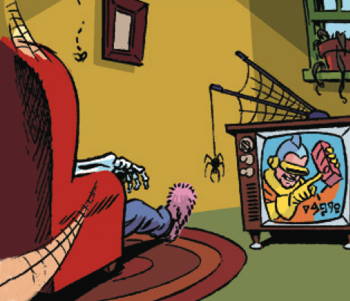February 2022
February 4, 2022
The Haus-Rucker-Co Live Exhibition

Source.
View the official catalog for this happening here.
One of the catalog pages below.

Posted By: Paul - Fri Feb 04, 2022 -
Comments (0)
Category: Art, Avant Garde, Pop Art, Museums, 1970s
February 3, 2022
The Bosom Battle of Mesquite
April 1988: In Mesquite, Texas, two women came to blows at a truck stop while arguing over which of them had the biggest bosom.
Abilene Reporter News - Apr 21, 1988
About a year later, a reporter tried to track down more info about this incident. He was able to speak with both the police officer who investigated the case and an employee at the truck stop, both of whom remembered the incident very well. But no record remained of who these women were, or which of them won the size contest.

Clarion Ledger - Sep 26, 1989
Posted By: Alex - Thu Feb 03, 2022 -
Comments (9)
Category: Contests, Races and Other Competitions, 1980s
Cooking for Witches
Read it here. Samples below.
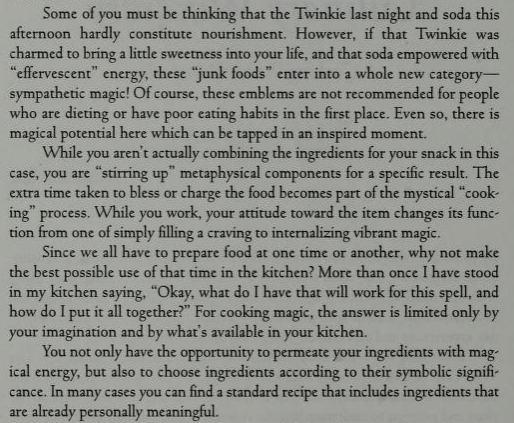
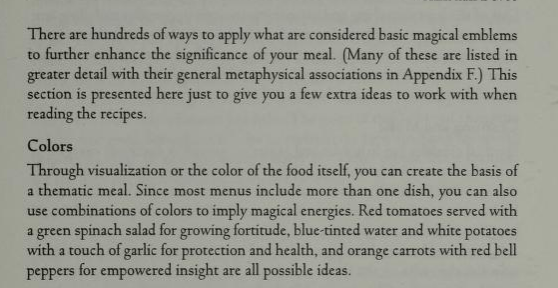

Posted By: Paul - Thu Feb 03, 2022 -
Comments (2)
Category: Domestic, Food, Cookbooks, Supernatural, Occult, Paranormal
February 2, 2022
Brainbeauism
While serving in World War II, Lt. George E. Lemon suffered a head injury from a jeep accident. As he described it, this gave his brain a "tilt" which resulted in a "me-to-me talkathon" and ended with him realizing "the only way to end war, inflation, unemployment, trade deficits and death."Lemon stewed on his realization for almost four decades until he retired in the 1980s. Then he renamed himself J.C. Brainbeau and began placing classified ads in various magazines offering to share his comprehensive "4 WAY PEACE PLAN" with anyone who sent him a self-addressed stamped envelope. Those who responded to him, however, just received more ads.
Donna Kossy offers some analysis in her book Kooks: A Guide to the Outer Limits of Human Belief:
For Brainbeau, the ads themselves were esoteric truths. Those who sent Self Addressed Stamped Envelopes (SASE) to Brainbeau expecting to receive literature, products or information received even more ads! They revealed Brainbeau's plans, bit by bit, ad by ad. Several sheets of closely spaced Brainbeau ads could be fit together like a jigsaw puzzle, but the resulting picture would be just another sheet of ads.
I figured someone on the Internet would have archived Brainbeau's bizarro ads. But I found nothing. So below are some of his ads that Kossy reproduced in her book.
You can read more about Brainbeau at Kossy's Kook Museum, which is now archived at the Wayback Machine.
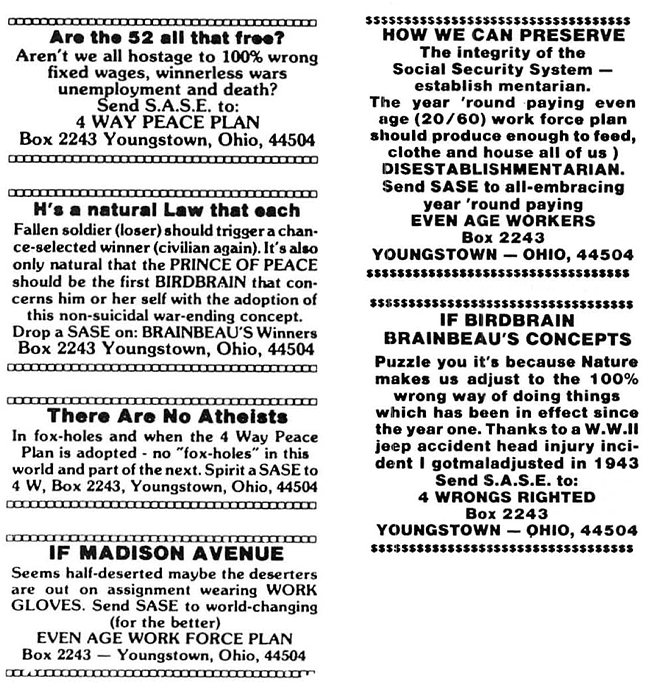


Posted By: Alex - Wed Feb 02, 2022 -
Comments (3)
Category: Eccentrics, Crackpots, Advertising
Follies of the Madmen #525
Posted By: Paul - Wed Feb 02, 2022 -
Comments (0)
Category: Sports, Advertising, Junk Food, Dogs, Asia
February 1, 2022
Surviving a fall from the Empire State Building
Two people have jumped from the observation deck of the Empire State Building, intending to commit suicide, and survived.The first was Thomas Helms, a 27-year-old artist from Hawaii. He jumped on Dec 22, 1977, but the winds blew him onto a ledge 15-feet below. After lying stunned for a while, he managed to crawl back inside through a window.
The second survivor was Elvita Adams of New York City. She jumped on Dec 2, 1979, but again the wind blew her back toward the building, depositing her on a balcony on the 85th floor. A security guard noticed her there and pulled her back inside.
For whatever reason, the case of Elvita Adams attracted more attention. It inspired an off-Broadway one-man show, "I've Been Elvita Adams," which didn't get good reviews.
Based on these two cases, windy days in December would seem to be the best days for surviving a jump from the Empire State Building.

Bridgewater Courier-News - Dec 23, 1977
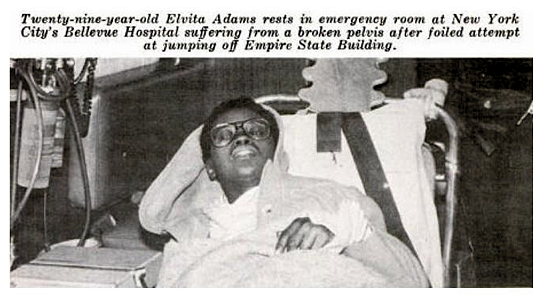
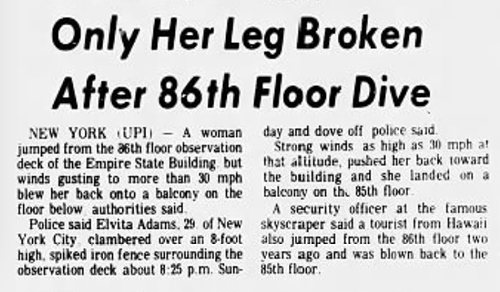
Provo Daily Herald - Dec 3, 1979
Posted By: Alex - Tue Feb 01, 2022 -
Comments (4)
Category: Death, Suicide, 1970s
Stramonium Cigarettes: Smoking to Relieve Asthma
Long professional article on their history here.The relevant info at Wikipedia.



Posted By: Paul - Tue Feb 01, 2022 -
Comments (2)
Category: Nature, Patent Medicines, Nostrums and Snake Oil, Nineteenth Century, Twentieth Century, Diseases
| Get WU Posts by Email | |
|---|---|

| Who We Are |
|---|
| Alex Boese Alex is the creator and curator of the Museum of Hoaxes. He's also the author of various weird, non-fiction books such as Elephants on Acid. Paul Di Filippo Paul has been paid to put weird ideas into fictional form for over thirty years, in his career as a noted science fiction writer. He has recently begun blogging on many curious topics with three fellow writers at The Inferior 4+1. Chuck Shepherd Chuck is the purveyor of News of the Weird, the syndicated column which for decades has set the gold-standard for reporting on oddities and the bizarre. Our banner was drawn by the legendary underground cartoonist Rick Altergott. Contact Us |
